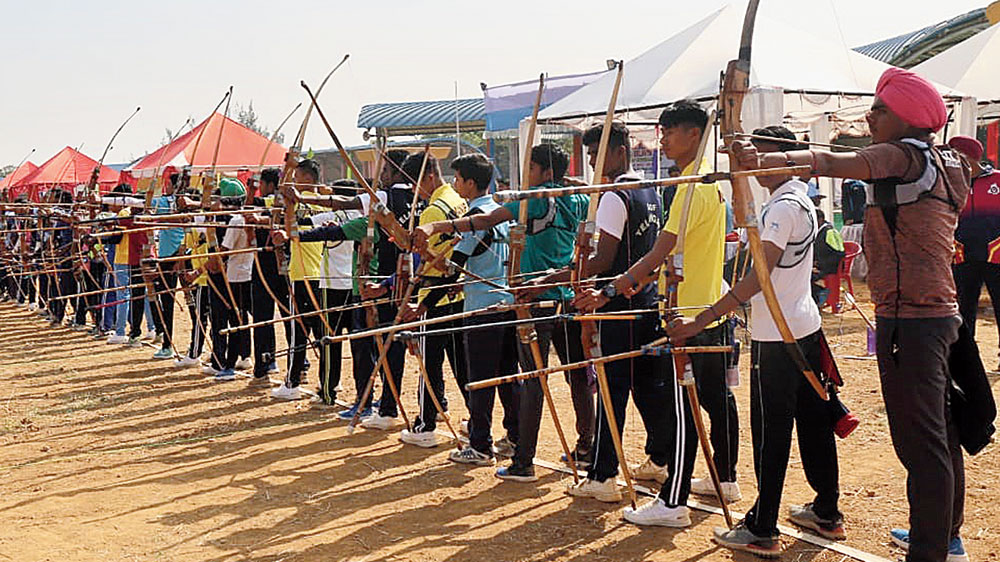Amid the cloud-draped mountains and verdant valleys of Northeast India, the state of Meghalaya
offers more than just breathtaking scenery—it offers a cultural experience unlike any other. One
of its most captivating traditions is Teer, a unique archery-based lottery that blends athleticism,
spirituality, and community storytelling into a daily ritual of chance.
The Cultural Genesis of Teer
The roots of Teer run deep in the history of the Khasi tribe, one of Meghalaya’s indigenous
communities. Archery was never just sport—it was a tradition woven into celebrations, rituals,
and local identity. During the 1950s and 1960s, as friendly archery competitions gained
popularity in Shillong, spectators Teer Results began wagering on the outcomes. What started as
casual guessing soon evolved into a thriving, community-based form of gambling.
Recognizing the game’s widespread appeal, the state government officially legalized Teer in the
1980s under the Meghalaya Amusements and Betting Tax Act. This move not only gave the game
structure but also allowed it to contribute to state revenue.
Understanding the Mechanics
Held from Monday through Saturday, Teer takes place at approved venues, with Shillong’s Polo
Ground being the most well-known. The format is consistent but far from conventional:
Around 50 archers, all members of local clubs, take turns shooting arrows.
In the first round (3:45 PM), each archer shoots 30 arrows. In the second round (4:30
PM), they shoot 20.
After each round, the number of arrows that successfully hit the target is counted.
The final two digits of that number become the winning number (e.g., if 689 arrows hit,
the winning number is 89).
Bets are placed in advance on numbers from 00 to 99, and more complex betting patterns like
"house" or "ending" add depth to the game.
Wagering and Winnings
One of the key attractions of Teer is its accessibility. Anyone can participate with a minimum bet
of ₹1. The rewards are significant—correct guesses can earn as much as ₹80 in the first round or
₹60 in the second. This affordability makes the game popular among people from all walks of
life, especially those for whom even small winnings can make a difference.
Unlike digital lotteries or games of pure chance, Teer retains a physical and psychological
complexity. Outcomes are influenced by environmental factors, archer performance, and,
notably, the widespread belief in intuition and symbolism.
Dreams and Destiny
One of the most fascinating dimensions of Teer is how numbers are chosen. In Meghalaya, many
rely on the subconscious—dreams in particular—to select their picks. Dream interpretation,
often passed down orally or through local books, plays a central role. Seeing a river in a dream
might indicate one number, while dreaming of a tiger could signal another.
Morning conversations frequently revolve around dreams, with players decoding their nightly
visions in hopes of discovering a lucky number. In this way, Teer isn’t just about gambling—it’s
a cultural ritual of belief and shared narrative.
Fueling Local Livelihoods
Far from being just entertainment, Teer sustains an informal economy. Archers earn for their
participation. Ticket sellers, dream interpreters, food vendors, and even transport operators rely
on daily Teer events for income.
Additionally, the state benefits from the system through taxation, making Teer a rare example of
a legal betting framework that supports both grassroots economies and public revenue.
A Game Under Watchful Eyes
Despite its popularity, Teer hasn’t escaped criticism. There are concerns about addiction and the
financial strain it may place on vulnerable individuals. To mitigate these risks, the government
has implemented strict guidelines—only authorized clubs can host games, and all betting must
go through regulated counters.
These regulations have helped maintain transparency and accountability, setting Teer apart from
illegal gambling activities in other parts of the country.
A Daily Spectacle and Social Bond
For many in Meghalaya, Teer is more than just a wager—it’s an event. Locals gather in
anticipation, watching the archers in action, awaiting the result with excitement. Even those who
don’t bet often show up just for the atmosphere.
Teer creates a rhythm for the day, Juwai Teer Result with conversations about dreams, predictions,
and lucky numbers weaving through homes, markets, and tea stalls. It becomes a shared
experience that strengthens community bonds.
Embracing Technology, Preserving Roots
While rooted in tradition, Teer hasn’t resisted modernization. Results are published online
shortly after each round, and dedicated apps now assist players in tracking outcomes and
analyzing patterns. Despite this digital shift, the heart of the game remains physical and
communal—the archers, the spectators, and the energy of the crowd cannot be replicated on a
screen.
